In a crowded blockchain space, Haust Network stands out by focusing on practical solutions to real-world challenges. Rather than overwhelming developers and users with complexity, Haust Network simplifies what works, building a Layer 2 solution that prioritizes scalability, security, and usability. Let’s break down what makes Haust Network unique and why these innovations matter.
ZK-Rollups
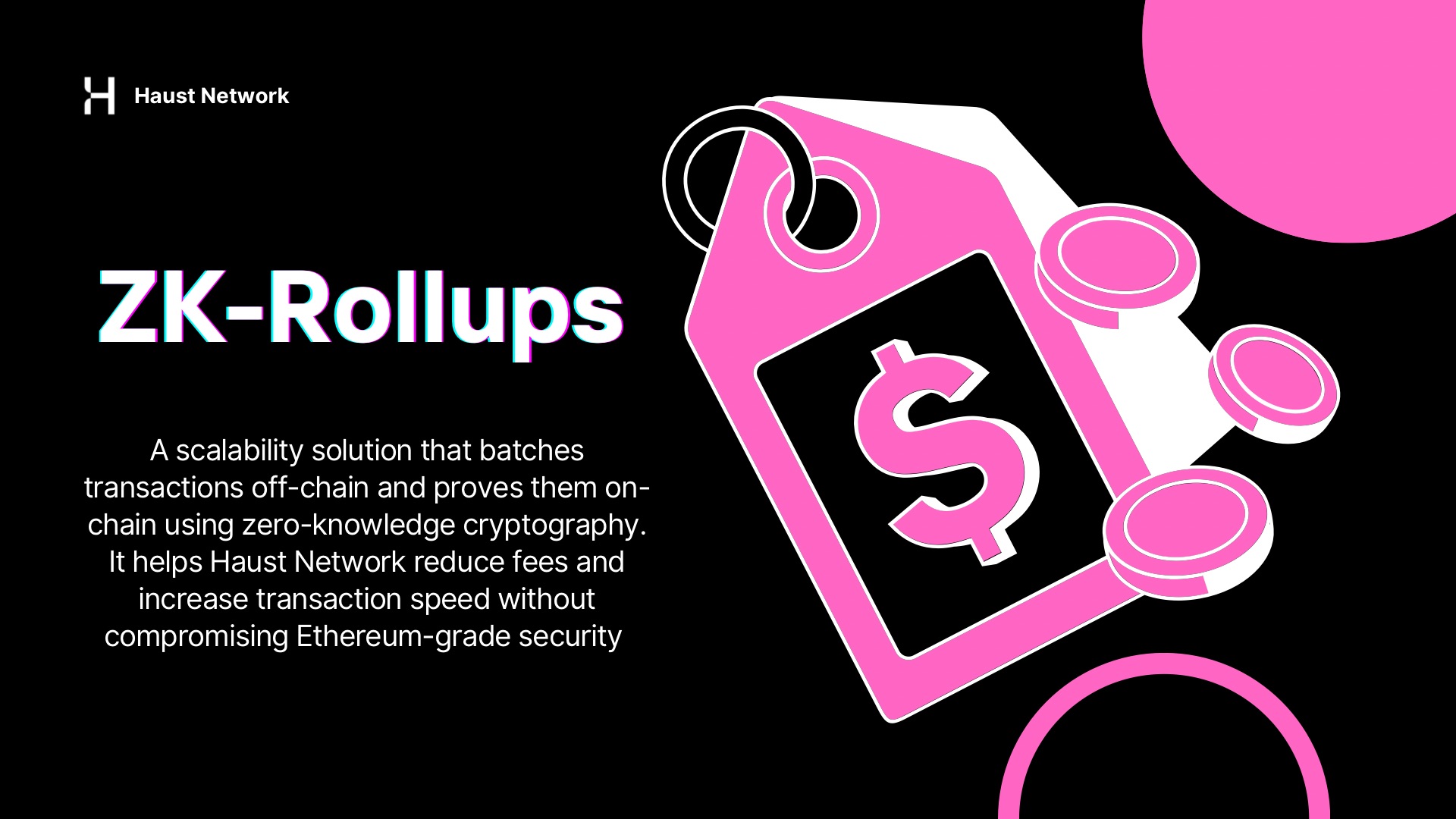
What it is: Ethereum’s scalability limitations have led to high fees and slower transaction speeds, especially during periods of high demand. ZK-rollups solve this by batching transactions off-chain and then verifying them on-chain using cryptographic zk-proofs. This approach increases transaction throughput while maintaining Ethereum’s security guarantees.
Why it matters: ZK-rollups dramatically reduce transaction costs and increase speed while maintaining the trust and security of Ethereum. For users, this means lower fees and faster transactions, and for developers, it provides a way to scale applications without sacrificing decentralization. It addresses the core issues of usability and scalability that have traditionally plagued blockchain networks.
Built on Polygon zkEVM
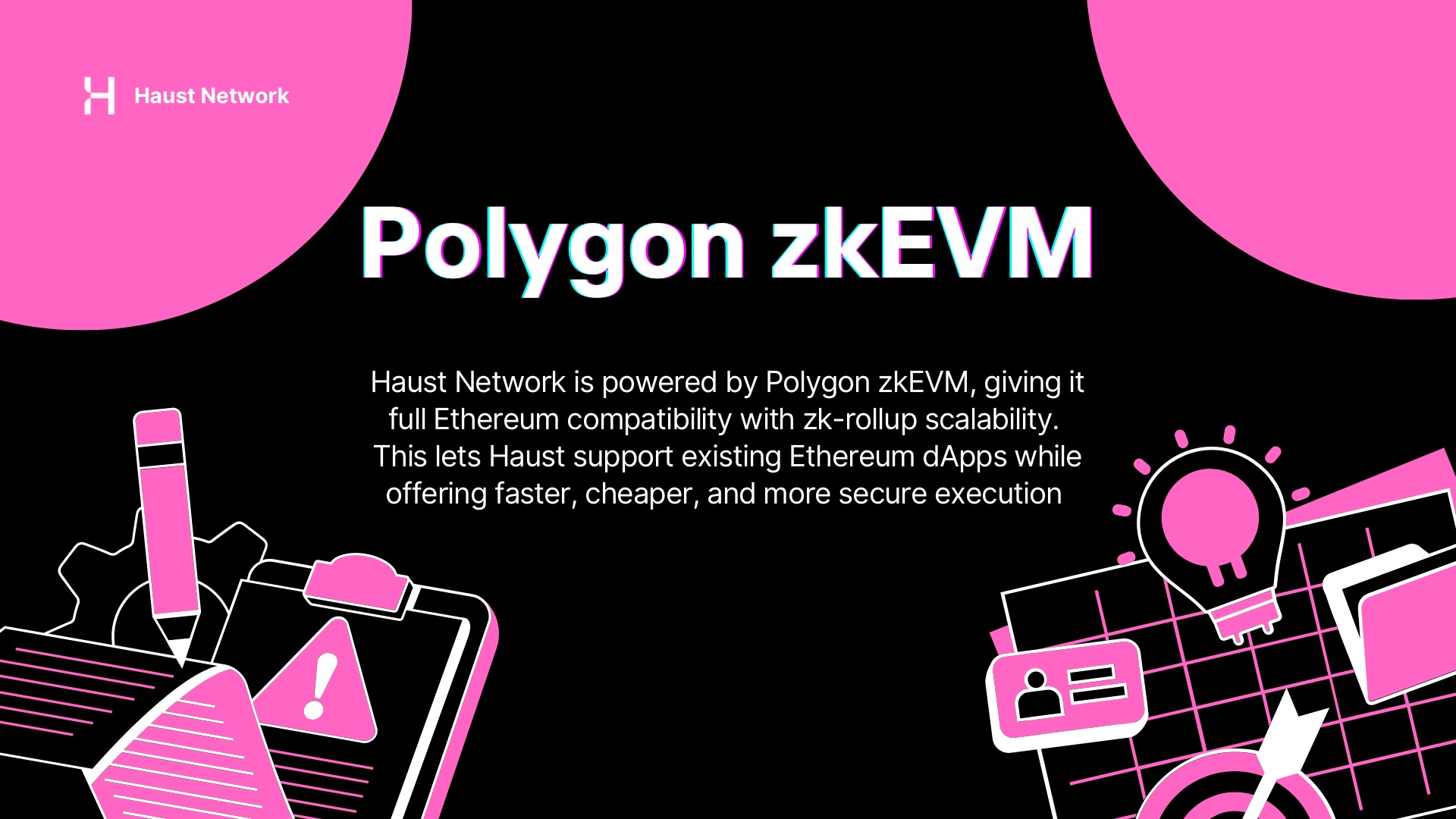
What it is: Haust Network is built on Polygon zkEVM, a Layer 2 solution that provides full Ethereum compatibility while utilizing zk-rollups. This means developers can deploy smart contracts on Haust just as they would on Ethereum, using familiar tools and programming languages.
Why it matters: Polygon zkEVM offers the best - Ethereum compatibility and zk-rollup scalability. Developers don’t need to learn a new language or framework, making it easier to migrate dApps to Haust Network. This accelerates development and broadens the range of applications available to users, ensuring a seamless experience across the ecosystem.
NEAR Data Availability Layer
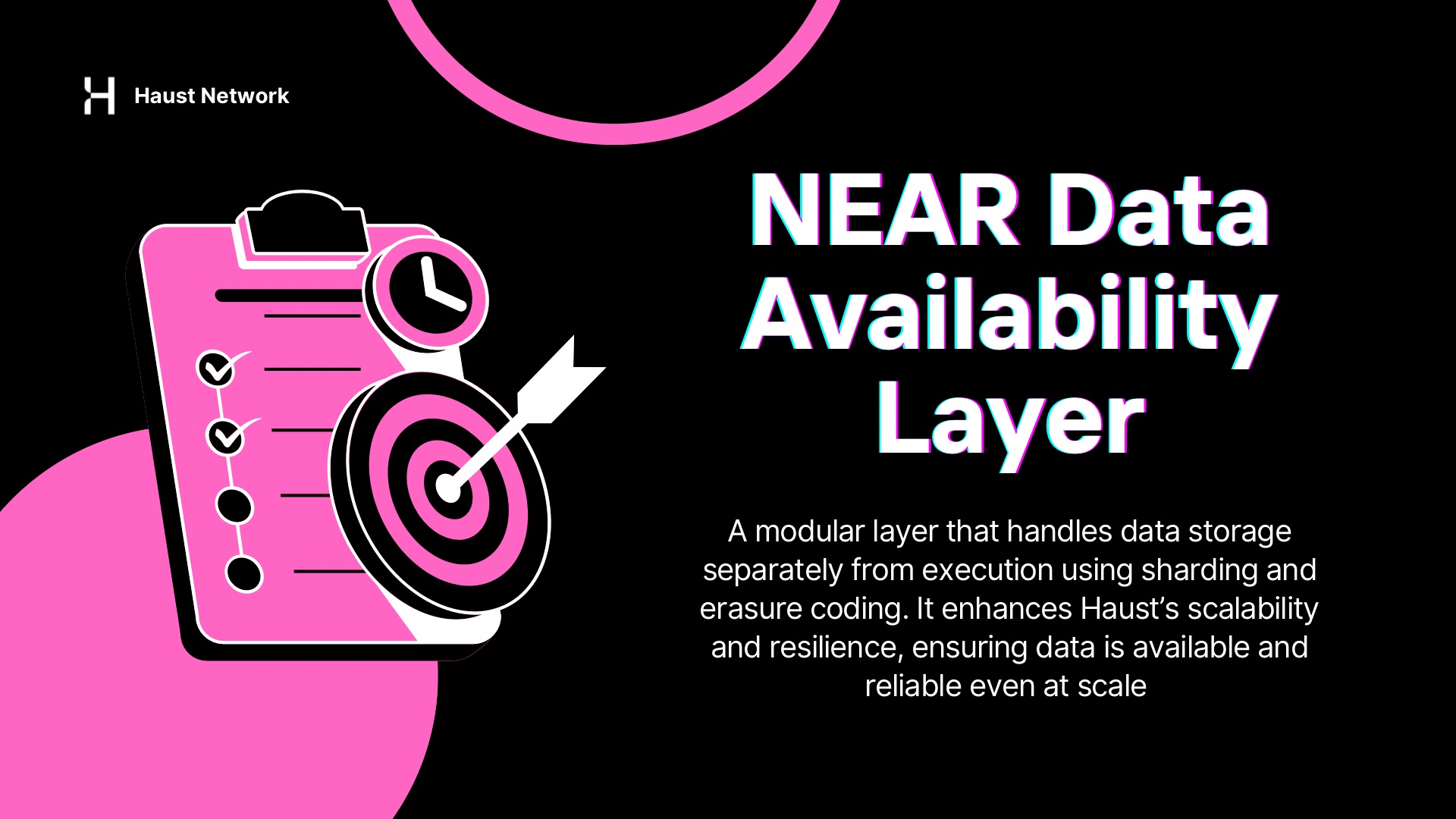
What it is: Storing and verifying transaction data can become a bottleneck as networks grow. NEAR’s Data Availability Layer separates data storage from transaction execution, ensuring that validators only focus on consensus. Data is distributed across multiple nodes using sharding, improving both security and scalability.
Why it matters: This separation improves the overall efficiency of the network, reducing latency and ensuring the data is reliably available. With NEAR’s DA Layer, Haust can scale without overloading validators with storage tasks, which makes it a more resilient network. This allows the network to handle large volumes of data and users without sacrificing performance or reliability.
Account Abstraction
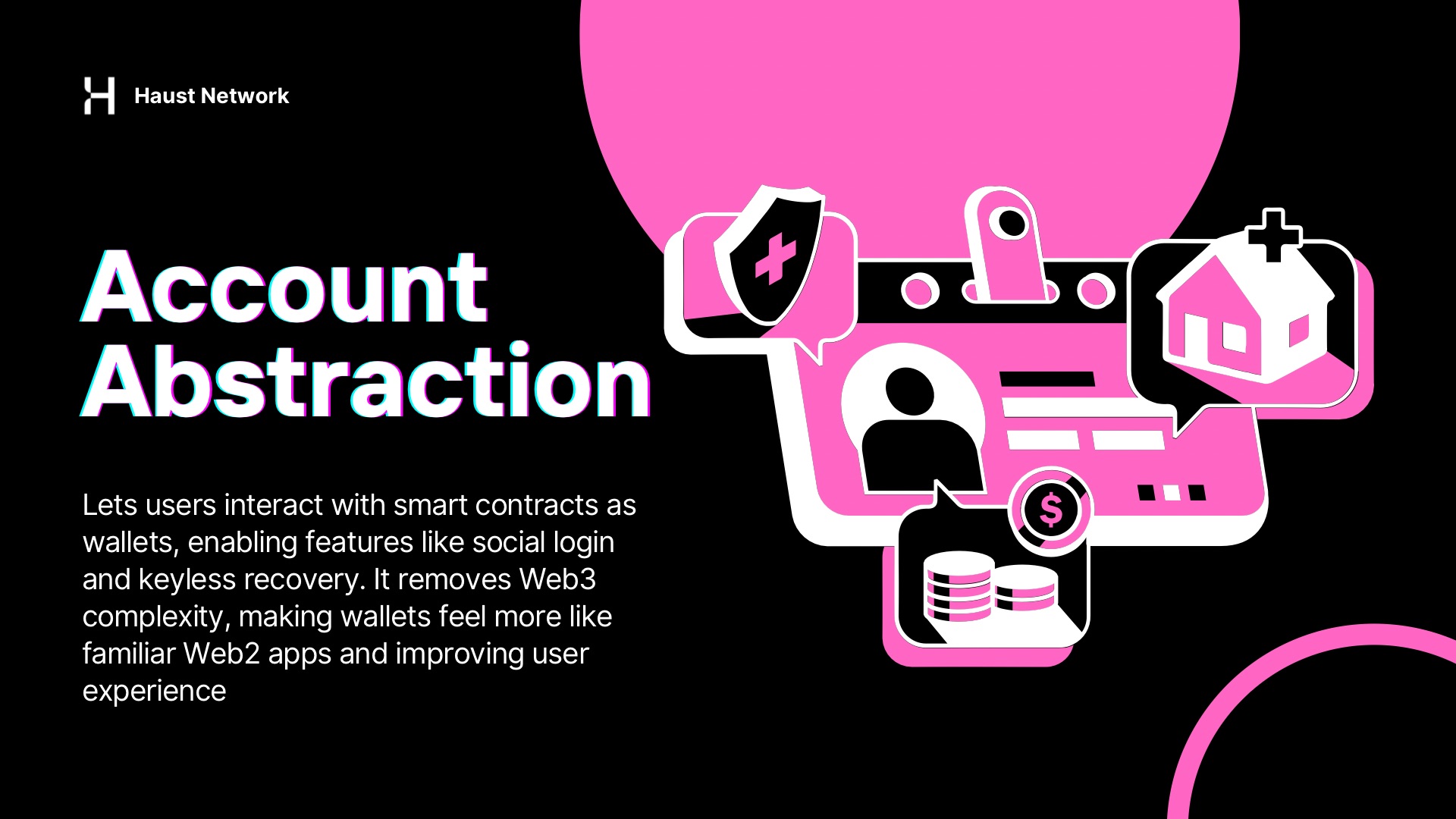
Account Abstraction allows users to interact with the blockchain using smart contracts as wallets. This removes the need for complicated key management and enables features such as social logins, keyless recovery, and flexible gas fee management.
Why it matters: For most users, dealing with private keys and complex wallet management is a significant barrier to entry. AA streamlines this process, making blockchain interactions more accessible by allowing for simpler authentication methods, such as social logins. This opens up blockchain technology to a broader audience, including those who may have found the technical aspects of Web3 too daunting.
AggLayer Integration
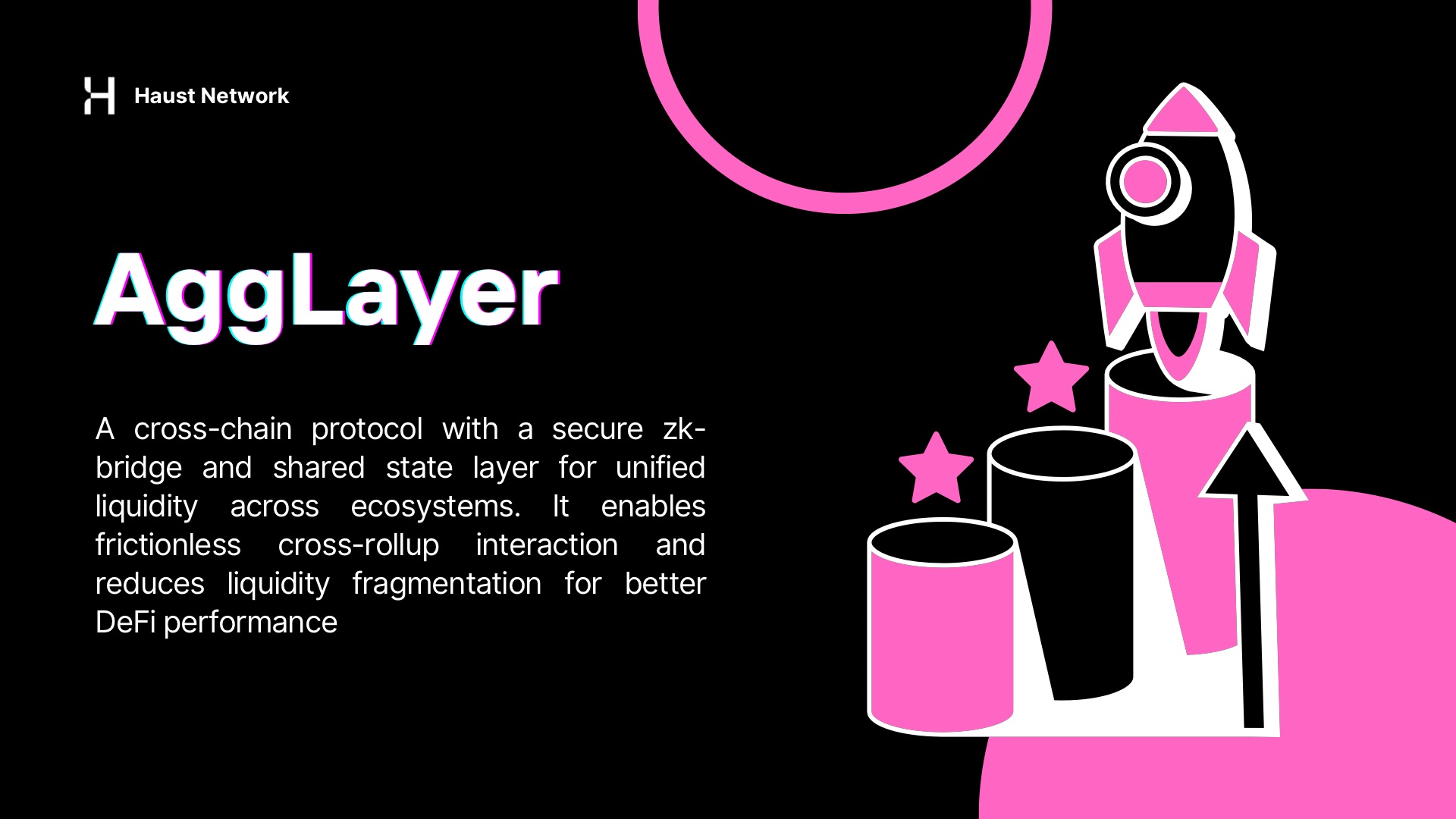
What it is: AggLayer is a protocol that solves the problem of fragmented liquidity in the blockchain world. It includes a zk-powered bridge and shared state layer, allowing assets to move securely and seamlessly across different chains and rollups.
Why it matters: Fragmented liquidity leads to inefficiency and higher costs for users and developers. By integrating AggLayer, Haust enables cross-chain interaction without compromising security, simplifying access to liquidity across the network. This reduces barriers to entry for users and ensures that developers can build applications that leverage the full potential of multi-chain ecosystems.
Nuffle Fast Finality Layer
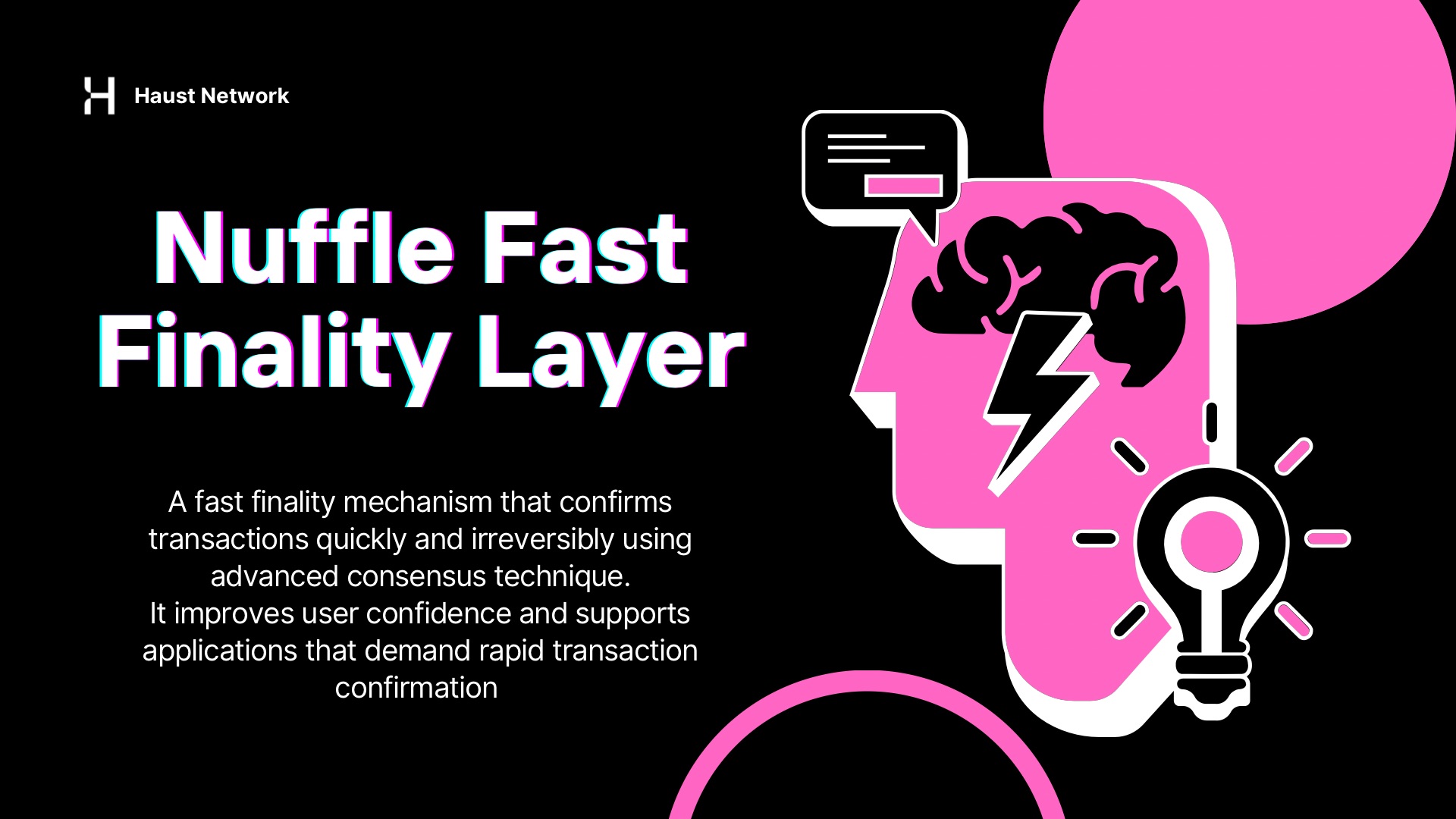
What it is: Transaction finality refers to the time it takes for a transaction to be confirmed as irreversible. Nuffle enhances the finality process by reducing the time needed to finalize a transaction, ensuring that actions are confirmed quickly and decisively.
Why it matters: Users expect immediate confirmation of their transactions. Nuffle’s fast finality layer provides that, ensuring a smooth and predictable experience. This is crucial for high-frequency applications, such as decentralized exchanges, where knowing whether a transaction is final or still pending is essential for users’ decision-making. Fast finality improves user confidence and the overall speed of the network.
Haustoria
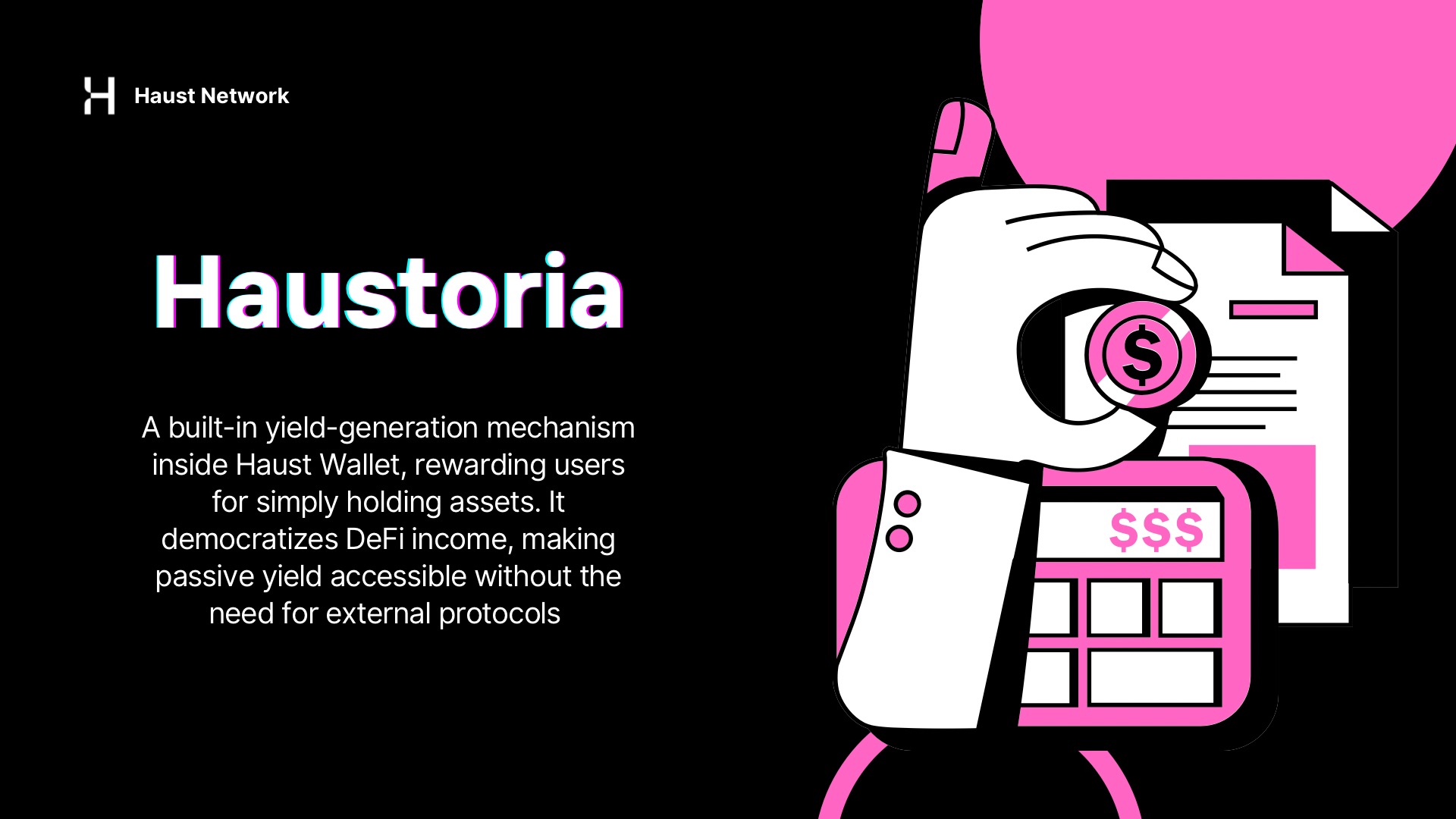
What it is: Haustoria is a built-in yield-generation mechanism that allows users to earn passive income directly through the Haust Wallet. Instead of requiring users to stake assets or navigate complex DeFi protocols, Haustoria enables users to earn yield simply by holding assets.
Why it matters: Haustoria makes DeFi easier and more accessible by removing the complexity associated with earning yield. Users no longer need to interact with multiple platforms or manage risk-intensive assets. Instead, they can rely on the native yield feature in their wallets, allowing them to benefit from decentralized finance without the steep learning curve or technical knowledge.
Conclusion
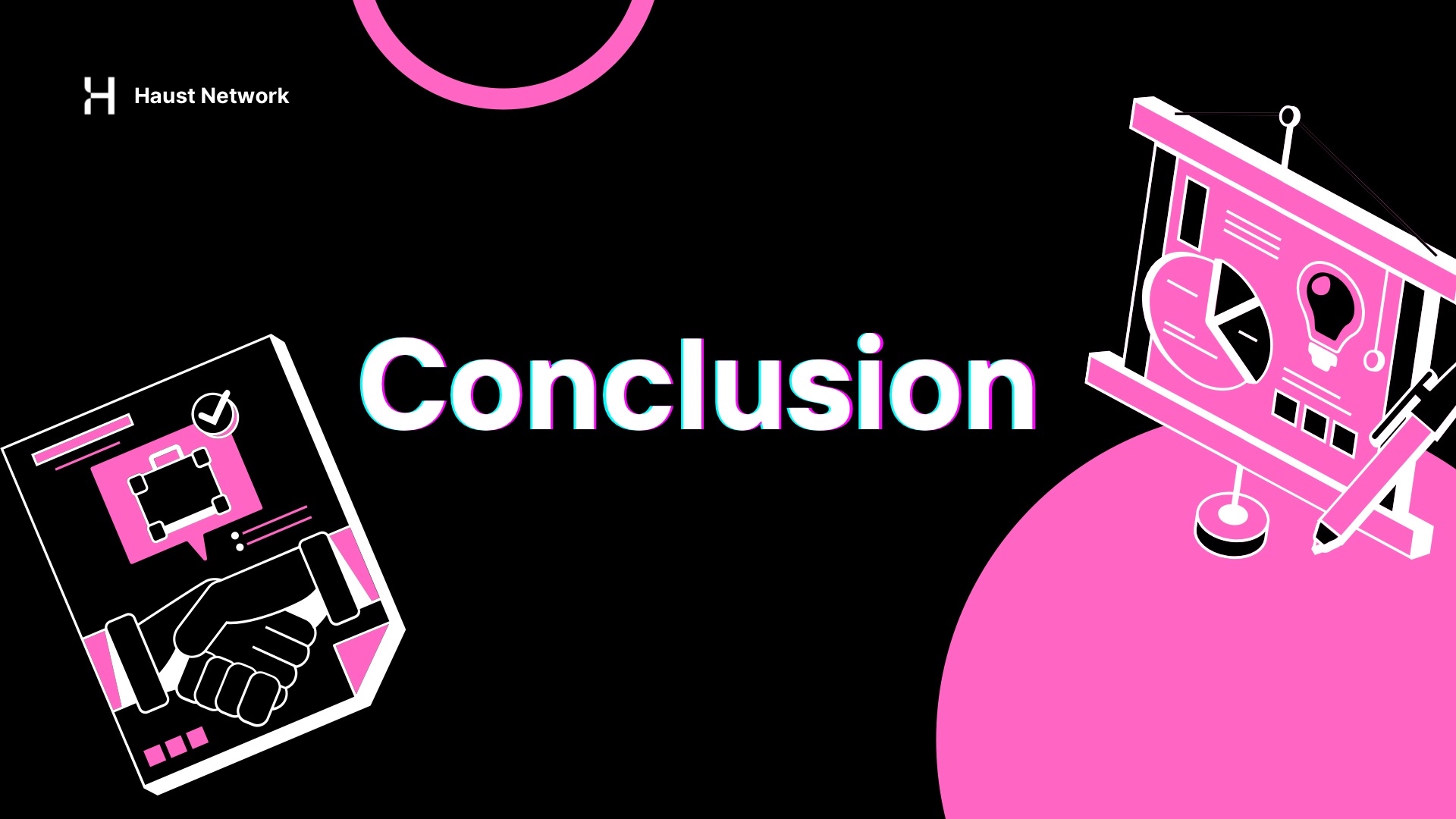
In a blockchain landscape often filled with technical complexity and fragmented solutions, Haust Network delivers clarity, cohesion, and usability. They are carefully selected technologies, integrated to solve specific problems faced by both developers and end users. By building on trusted, modular components and enhancing them with user-focused design, Haust delivers a Layer 2 that feels intuitive, efficient, and powerful.
More information about the project can be found below:
Twitter: https://x.com/HaustNetwork
Discord: https://discord.com/invite/QWGxjTXD8N
Web-site: https://haust.network/
Telegram: https://t.me/haustnetwork
